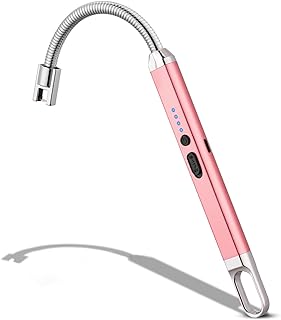Beyond Flicking: Exploring the Different Types of Lighters
The humble lighter, a seemingly simple tool, holds a surprisingly diverse world within its small frame. From the classic Bic to the intricate Zippo, lighters have evolved over time, boasting a vast array of designs, mechanisms, and fuels. Let's delve into some of the fascinating types of lighters:
1. Flint Wheel Lighters:
* The OG: These are the most common and recognizable lighters, employing a flint and wheel mechanism to spark a flame.
* Mechanism: A rotating wheel creates friction against a flint, generating sparks that ignite the fuel.
* Examples: Bic, Cricket, and many disposable lighters.
* Pros: Affordable, readily available, and simple to use.
* Cons: Prone to malfunction if the flint wears down or the wheel becomes clogged.
2. Piezoelectric Lighters:
* Electric Spark: These lighters use a piezoelectric crystal to generate an electric spark.
* Mechanism: Pressing a button compresses the crystal, creating an electric current that jumps a gap, igniting the fuel.
* Examples: Many butane-powered lighters, including some Zippo models.
* Pros: Reliable and long-lasting, require less maintenance than flint wheel lighters.
* Cons: Can be more expensive, and some models require a battery.
3. Torch Lighters:
* Powerful Flame: Known for their intense, focused flame, torch lighters are ideal for heavy-duty tasks.
* Mechanism: Usually fueled by butane, these lighters feature a nozzle that concentrates the gas, creating a powerful, controlled flame.
* Examples: Jet lighters, blowtorch lighters, and some culinary lighters.
* Pros: Excellent for lighting large items, grilling, and crafting.
* Cons: Can be dangerous if mishandled due to the intense heat.
4. Plasma Lighters:
* Cutting-Edge Technology: These lighters utilize an electrical arc to ignite fuel.
* Mechanism: An electrical current creates a high-voltage arc, igniting the fuel without a traditional flame.
* Examples: USB rechargeable lighters, often marketed for their eco-friendly nature.
* Pros: Wind-resistant, long-lasting, and environmentally friendly.
* Cons: Can be more expensive than traditional lighters, and some models may require charging.
5. Zippo Lighters:
* The Icon: A timeless classic, Zippo lighters are known for their durability, iconic design, and refillable fuel system.
* Mechanism: Utilizes a flint wheel and fuel-soaked cotton wick, generating a reliable flame.
* Pros: Refillable, customizable, and collectible.
* Cons: Can be more expensive than disposable lighters, and require regular maintenance.
6. Unique and Specialty Lighters:
* Beyond the Basics: The lighter world extends beyond these common types.
* Examples: Windproof lighters, magnifying glass lighters, pipe lighters, and even lighters shaped like objects or characters.
Choosing the Right Lighter:
* Purpose: What will you be using the lighter for? Lighting candles, grilling, or simply for everyday use?
* Fuel: Do you prefer butane, lighter fluid, or a rechargeable option?
* Durability: How important is a durable and long-lasting lighter?
* Style: Do you prefer a sleek modern design or a classic look?
Safety First:
* Always store lighters in a safe place, out of reach of children.
* Never leave a lit lighter unattended.
* Use lighters responsibly and be mindful of fire hazards.
By understanding the diverse world of lighters, you can choose the perfect one for your needs, whether you're a casual smoker, a grill master, or simply appreciate the intriguing history and evolution of this everyday tool.


